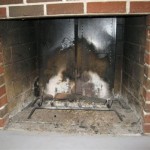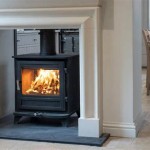Big Fireplace Designs: A Comprehensive Guide to Grand Focal Points
Fireplaces have long served as central gathering points within homes, providing warmth, light, and a sense of comfort. The trend of incorporating larger, more prominent fireplaces has steadily gained popularity, transforming these functional elements into significant design features. Big fireplace designs are not merely about size; they encompass a holistic approach to aesthetics, structural integrity, and integration within a broader architectural context.
This article explores the various facets of big fireplace designs, encompassing the factors to consider during planning, the stylistic options available, and the technical aspects to address for a successful implementation. From traditional masonry structures to contemporary linear installations, the realm of big fireplace designs offers a wide array of possibilities for homeowners seeking to elevate the ambiance and visual appeal of their living spaces.
Design Considerations for Large-Scale Fireplaces
Before embarking on a big fireplace design project, it is imperative to carefully consider several key factors. These considerations will influence the overall aesthetics, functionality, and safety of the fireplace. Ignoring these preliminary steps can lead to design compromises, structural issues, and potential hazards.
Firstly, the scale of the room must be taken into account. A large fireplace in a small room can overwhelm the space and diminish its perceived size. Conversely, a modestly sized fireplace might be lost in a large, open-plan living area. The proportions of the fireplace should be carefully balanced with the existing dimensions of the room to create a harmonious visual effect.
Secondly, the architectural style of the home plays a crucial role in determining the appropriate fireplace design. A traditional home might benefit from a classic masonry fireplace with intricate detailing, while a modern home might be better suited for a sleek, minimalist linear fireplace. Consistency in style will enhance the overall cohesive design of the home.
Thirdly, consider the intended use of the fireplace. Will it primarily serve as a decorative element, or will it be a primary source of heat? If heating efficiency is a priority, a closed-combustion fireplace or a fireplace insert might be the most appropriate choice. For purely aesthetic purposes, a gas fireplace or an electric fireplace can provide the desired visual appeal without the complexities of wood-burning systems.
Fourthly, examine the structural implications of a large fireplace. A substantial masonry fireplace can place significant weight on the floor, potentially requiring structural reinforcement. This is especially important in older homes or in buildings with suspended floors. Consult with a structural engineer to assess the load-bearing capacity of the floor and ensure that it can safely support the weight of the fireplace.
Finally, building codes and safety regulations must be meticulously followed. Fireplace installations are subject to strict regulations regarding clearances to combustible materials, chimney construction, and ventilation requirements. Failure to comply with these regulations can result in fines, mandatory modifications, or even potential fire hazards. Obtain the necessary permits and inspections to ensure that the fireplace installation meets all applicable codes.
Exploring Different Styles and Materials
Big fireplace designs offer a diverse range of stylistic options, allowing homeowners to create a unique and personalized focal point in their living spaces. The choice of style and materials will significantly impact the overall aesthetic and ambiance of the room.
Traditional masonry fireplaces often feature brick, stone, or a combination of both. These fireplaces typically incorporate a large hearth, a decorative mantel, and intricate detailing such as corbels, keystones, and arches. Traditional designs often evoke a sense of warmth, history, and timeless elegance. The use of natural materials like stone and brick adds texture and visual interest to the fireplace.
Modern linear fireplaces are characterized by their long, horizontal shape and minimalist design. These fireplaces often feature clean lines, smooth surfaces, and a focus on simplicity. Modern linear fireplaces are typically fueled by gas or electricity, providing a convenient and efficient source of heat. They are frequently integrated into a wall with built-in media storage or shelving, creating a seamless and contemporary look.
Rustic fireplaces often utilize natural materials such as river rock, reclaimed wood, and rough-hewn timbers. These fireplaces evoke a sense of connection to nature and a relaxed, informal atmosphere. Rustic designs may incorporate features such as exposed brick, stacked stone, or a large wooden mantel. The use of natural textures and earthy tones creates a warm and inviting space.
Contemporary fireplaces blend elements of both modern and traditional styles. They often feature a combination of materials, such as stone and metal, or brick and glass. Contemporary designs may incorporate unique shapes, unexpected angles, and unconventional materials, creating a bold and eye-catching focal point. The use of lighting can further enhance the visual appeal of a contemporary fireplace.
The choice of materials for a big fireplace is crucial to its overall aesthetic and durability. Natural stone, such as granite, limestone, and marble, offers a timeless elegance and exceptional durability. Brick provides a classic and versatile option, available in a wide range of colors and textures. Concrete can be used to create a modern and industrial look, while tile offers a durable and customizable surface. Metal accents, such as stainless steel or copper, can add a touch of sophistication and visual interest.
Technical Aspects of Fireplace Installation
Installing a big fireplace involves several technical considerations that must be addressed to ensure its safe and efficient operation. These considerations include ventilation, fuel type, and firebox design.
Proper ventilation is essential for all fireplaces, regardless of their size or fuel type. A properly designed chimney will effectively exhaust smoke and combustion gases from the fireplace, preventing them from entering the living space. The chimney must be sized appropriately for the fireplace, and it must be constructed of fire-resistant materials such as brick, stone, or stainless steel. Regular chimney inspections and cleaning are crucial to maintaining its proper function and preventing chimney fires.
The choice of fuel type will impact the design and installation of the fireplace. Wood-burning fireplaces require a dedicated wood storage area and a readily available source of firewood. Gas fireplaces require a connection to a natural gas or propane line, and they must be installed by a qualified gas fitter. Electric fireplaces require only an electrical outlet, making them a convenient and versatile option.
The firebox is the chamber where the fire burns. Its design is critical to the fireplace's efficiency and safety. A well-designed firebox will maximize heat output and minimize smoke production. The firebox should be constructed of fire-resistant materials such as firebrick or cast iron. The size and shape of the firebox will depend on the size of the fireplace and the type of fuel used.
Fireplace inserts are a popular option for upgrading existing fireplaces or for converting wood-burning fireplaces to gas or electric. Fireplace inserts are self-contained units that are inserted into the existing firebox. They offer improved efficiency, reduced emissions, and greater convenience than traditional open fireplaces.
Heat distribution is another important consideration for big fireplaces. Large fireplaces can generate a significant amount of heat, which can be unevenly distributed throughout the room. To improve heat distribution, consider installing a fireplace blower, which will circulate the warm air more effectively. Another option is to incorporate a heat exchanger into the fireplace design, which will transfer heat to other parts of the home.
Finally, consider the accessibility of the fireplace for maintenance and cleaning. Regular cleaning is essential to maintaining the fireplace's efficiency and preventing the buildup of creosote, a flammable substance that can cause chimney fires. Provide easy access to the firebox and chimney for cleaning purposes. Also, ensure that the fireplace controls and gas valves are easily accessible for adjustments and repairs.

15 Fireplaces So Large Grand You Can Almost Walk Into Them Designed Fireplace Design Home French
:strip_icc()/living-room-rug-lounge-chairs-0f63d24a-ad5256d752f742eeb8a05b958f61dfae.jpg?strip=all)
34 Beautiful Fireplace Ideas For Cozy Warmth All Year Long

36 Fireplace Decor Ideas Modern Mantel
:strip_icc()/stone-fireplace-white-mantel-1EKKPPdlKiR9NNO0G_oJsK-30888389d21f4b2eb0a3cf1761368d18.jpg?strip=all)
34 Beautiful Fireplace Ideas For Cozy Warmth All Year Long

36 Fireplace Decor Ideas Modern Mantel

40 Best Fireplace Décor Ideas Mantel

70 Best Fireplace Decor Ideas That Always Look Stylish

18 Dreamy Mountain Home Fireplaces Living

15 Fireplaces So Large Grand You Can Almost Walk Into Them Designed Home Fireplace French Country House Surrounds
:max_bytes(150000):strip_icc()/jessicanelsondesignlivingroomwhitefireplace-c7f90f6e67f34264abe15828e252dd18.png?strip=all)
25 Gas Fireplace Ideas To Bring Warmth Your Home
Related Posts








